As an Amazon Associate, I earn from qualifying purchases.
Homemade Strawberry Rhubarb Jam is a delicious spread for toast, yogurt, or dessert recipes. Thanks to the low-sugar recipe, this jam tastes fresh and bright, just like real fruit.
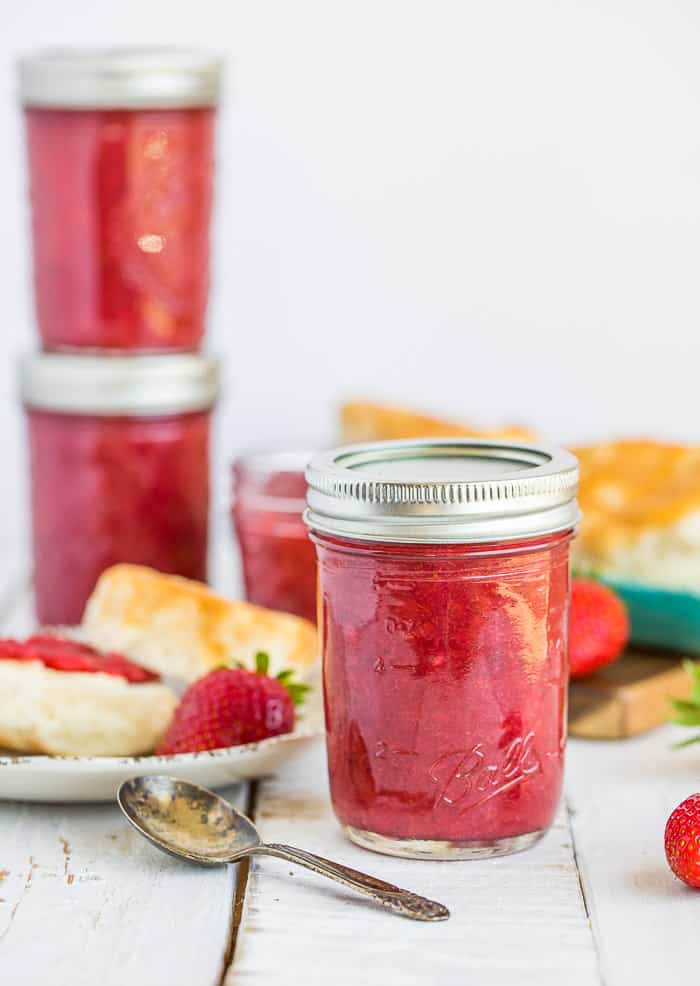
Those magical few weeks when strawberries and rhubarb are ripe at the same time just begs for baking and jam-making.
Once you’ve already made at least one gluten-free strawberry rhubarb crisp, it’s time to make strawberry rhubarb jam!
JAM EQUIPMENT
- Jars! Canning jars only (don’t use leftover mayo, jam, or pasta sauce jars from the store). I recommend 8 oz jam jars, or pints if your family goes through jam quickly.
- Clean, never before used canning lids
- Canning rings
- Pomona’s Pectin (or another low-sugar pectin brand)
- Water bath canner or deep stockpot with a jar rack.
- Large saucepan. I adore my dutch oven for so many reasons, and jam season is another one of those reasons! Having a wide pot with high sides is best for making jam as it allows the jam to process at a rolling boil without slopping over the sides.
- Ladle
- Funnel
- Jar lifter
- Clean washcloths and towels
- Medium mixing bowl
- Something to stir with (I love this thingy)
- Knife and cutting board
- Comfy shoes
Check out this Canning Supplies and Equipment List for a detailed explanation of all the supplies and brands I recommend, as well as ideas on where to find items for free/cheap.
HOW TO MAKE STRAWBERRY Rhubarb JAM
*I’ll walk you through it here with some photos and tips, and you’ll also find a printable recipe card at the bottom of the post with exact measurements, etc. You can also click “jump to recipe” to skip down.
CANNING PREP
Prepare your water bath canner by filling it halfway with water, and setting it on the stove. Turn the burner to high. Once it reaches a boil, reduce it to simmer. You want to keep the water hot so that everything is ready when the jam is.
Wash and clean your jars. You’ll want to keep them warm to avoid having them crack when placed in the canner. You can fill them with hot water, or place them on a tray in the oven at 170˚F.
Wash your lids and set them aside in a clean place. You no longer need to simmer lids in water to keep them sterile. Woot!
Making the jam
Rinse the strawberries. Remove the tops, cut in half (or quarters for large berries), and place in a bowl. Gently mash with a potato masher or pastry cutter until it yields 2.5 cups of mashed berries.
You can also “cheat” and start with Strawberry Puree or Frozen Strawberries in Syrup if you already have some on hand.
Add the rhubarb to a heavy-bottomed saucepan with 1/2 cup of water. Cook on medium heat, stirring often until the rhubarb softens. You’ll need about 4 cups of fresh sliced rhubarb to yield 1.5 cups of cooked rhubarb. Stir in the mashed strawberries and continue to cook the mixture until the fruits are combined.
In a small bowl, combine 1/2 tsp calcium powder (in the Pomona’s Pectin box) with 1/2 cup cool water to create calcium water. If you are using another low-sugar pectin brand, follow the steps on their packaging.
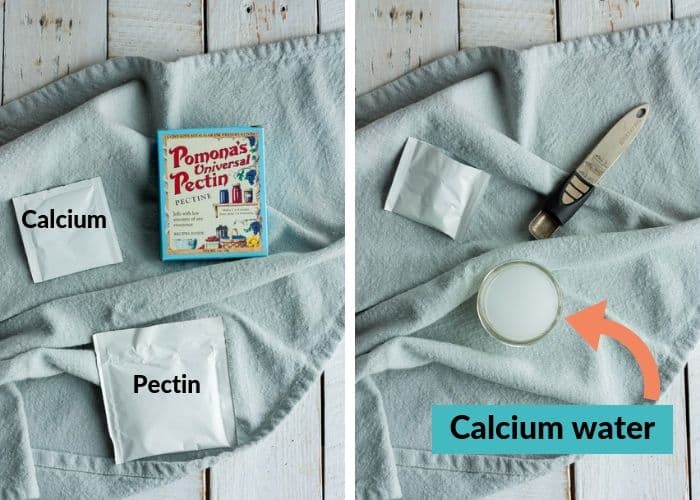
In a separate bowl, combine sugar and pectin. Set aside. To prevent clumping, Pomona’s must be mixed with your sweetener before being added to the fruit.
Add the lemon juice and calcium water to the pot with the rhubarb and strawberries, stir. Add the sugar/pectin mixture, and bring to a rolling boil. Stir constantly for 3 minutes, turning down the burner to medium if the jam starts popping.
Pro tip: actually set a timer and stir for the full three minutes. The constant stirring prevents the jam from burning, and the sustained cooking time is important to help the jam set.
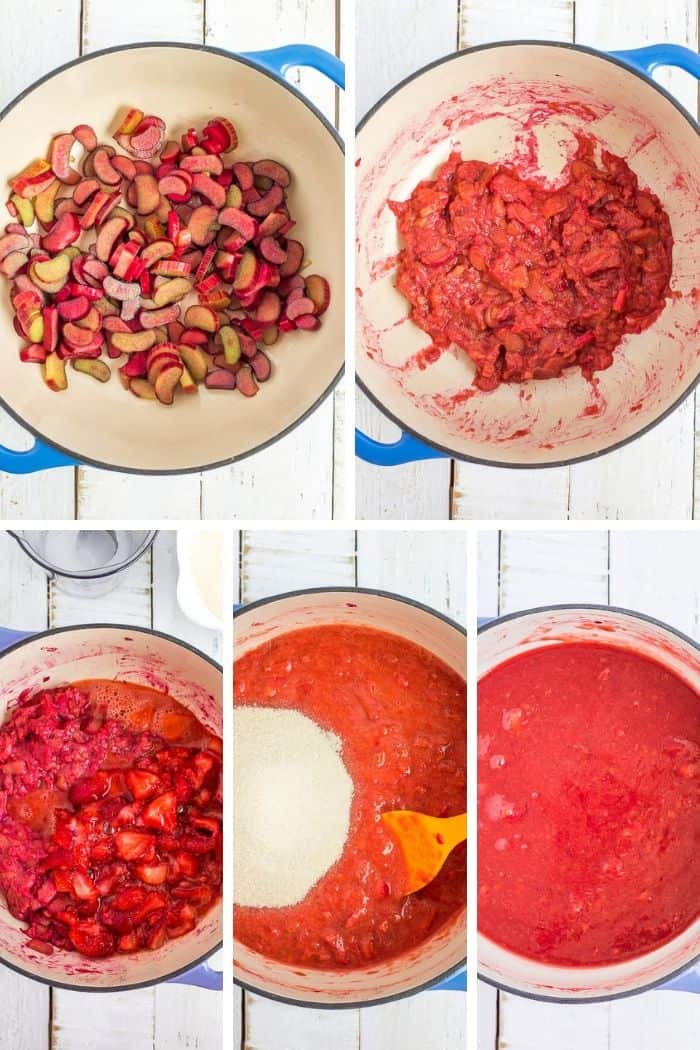
Pro tip: a rolling boil means no amount of stirring will stop the bubbling. Use a long spoon or spatula to avoid any jam popping onto your hand.
At this point, turn the burner under the canner back up to high and get that water boiling again.
Remove the jam pot from heat, and stir gently for 5 more minutes. At the end of the 5 minutes, skim any foam that remains.
Pro tip: if you’d like to freeze your jam, go ahead and put it in jars now, let them cool, and pop them in the freezer. Read on only if you want to can your jam.
Canning Strawberry Rhubarb Jam
Using the funnel and a ladle, add the jam to your prepared jars, leaving 1/4 inch of headspace at the top. Headspace is the amount of room between the top of the food, and the rim of the jar.
Using a wet clean rag, wipe the rim to make sure there isn’t any sticky jam on there.
Place a clean lid on the jar and then a ring. Tighten the ring to fingertip tight. Fingertip tight = tight but not so tight that a normal human couldn’t budge it. We’re not using Andre the Giant level strength on this.
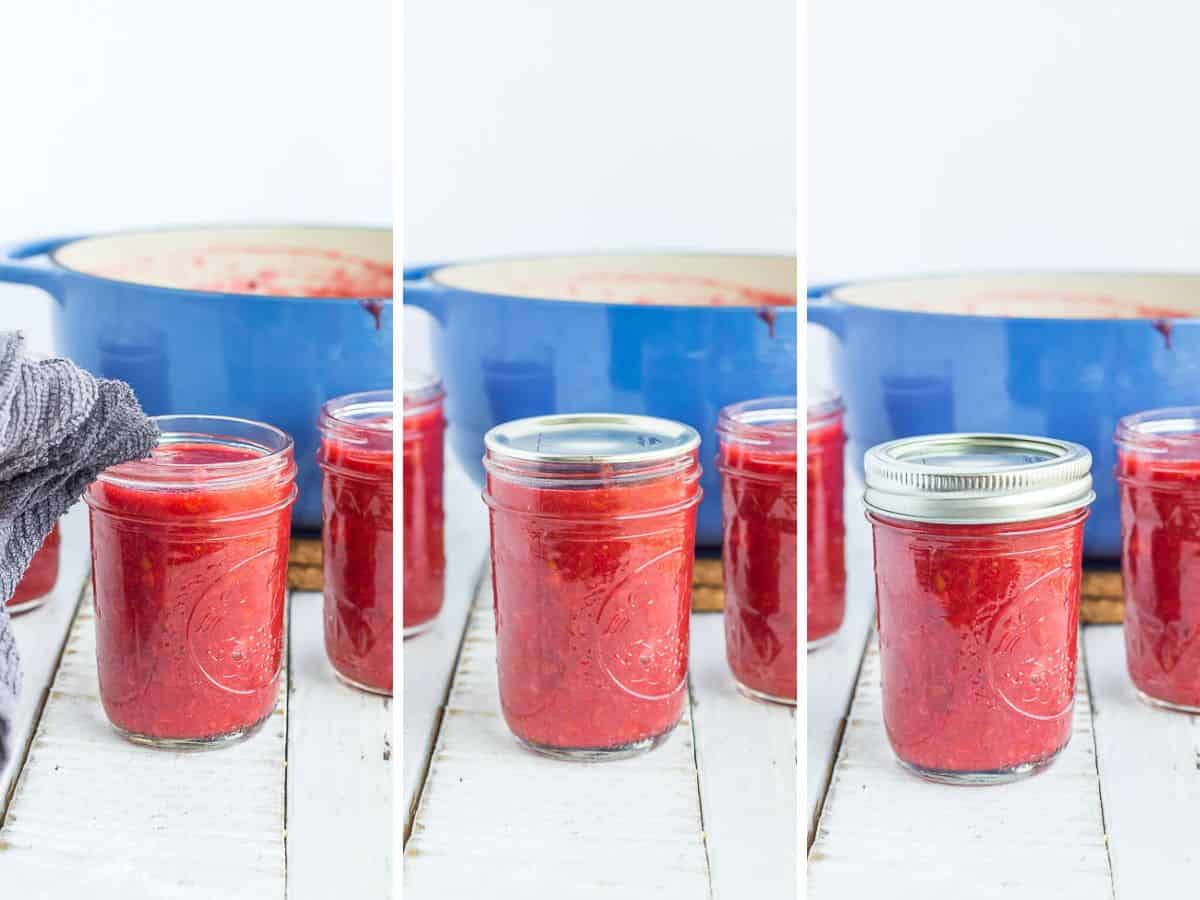
Using canning tongs, add jars to the boiling water, and put the canner lid on. Pro tip: you must have at least 1 inch of water over the tops of the jars for safe canning.
Bring the water in the canner back to a rolling boil and then lower your jars into the canner using a jar lifter. Put the lid on the canner.
Processing times will vary based on altitude. See the chart below. Pro tip: the water must return to a rolling boil in the canner before you can start the timer.
Processing Times for Strawberry Rhubarb Jam
| Processing Time for Strawberry Rhubarb Jam | ||||
| Process Times at Altitudes of: | ||||
| Style of Pack | Jar Size | 0-1,000 ft | 1,001-6,000 ft | Aove 6,000 ft |
| Hot | Half-Pints & Pints | 5 min | 10 min | 15 min |
| *Source: National Center For Home Food Preservation | ||||
Once the jam has processed, remove the canner from the burner, and carefully remove the lid of the canner (Pro tip: use oven mitts to take the lid off because the steam is super hot).
Using canning tongs, carefully remove the jars, and place them on a thick towel in a place where they can be undisturbed for 12 hours.
After the jars have rested for about 12 hours, press down in the middle of each lid. If it “gives” at all, the jar didn’t seal. Either enjoy it that day, put it in the fridge, or reprocess it.
What if my jars don’t seal?
If you’ve correctly processed the jam, and the lids still didn’t seal, you can reprocess them.
Double-check to make sure there are no:
- Chips in the rim of the jar
- Dried jam on the rim (anything between the rim and the lid may prevent a seal).
Best practices would involve using brand-new lids for reprocessing. Set aside the old lids to use for dry storage (related: Pantry Essentials for the Home Cook).
If the jars don’t seal on the second attempt, you likely have a bad batch of lids, or your canning process has a step missing. Email me and we’ll try to troubleshoot what is going on.
For unsealed jars, you can place them in the fridge. Eat the jam within three weeks. Or freeze for up to 6 months.
Storage for Homemade Jam
Once the jars have sealed and cooled, remove the rings. Label and store sealed jars in a cool (best results are 50-70˚F) dark place for up to 12-18 months.
If you have the space available, do not stack the jars on top of each other more than two jars high.
PRO TIPS/RECIPE NOTES
- If you prefer a tarter strawberry rhubarb jam, use 2.5 cups of cooked rhubarb and 1.5 cups of mashed strawberries.
- You can keep an opened jar in the fridge for up to a month. Sealed and processed jars are safely stored at room temperature for 12-18 months.
- Jam is best when made in small batches. Avoid doubling or tripling the recipe.
- The mixed calcium water will last for three months in the fridge. Shake well before using it for other recipes like Low-Sugar Strawberry Jam.
- You can reduce the sugar to 1 cup if desired but you would need to cook the jam down for 8 minutes instead of 3.
MORE GREAT RECIPES LIKE THIS
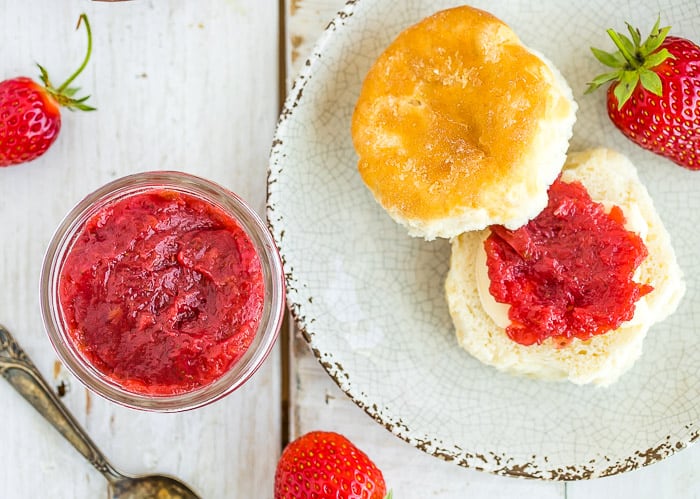
Strawberry Rhubarb Jam (Low Sugar)
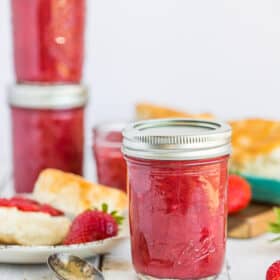
Equipment
Ingredients
- 2.5 cups strawberries {mashed}{~4 cups fresh}
- 4 cups chopped rhubarb {~1.5 cups cooked}{~3 large stalks}
- 1/2 cup water {for rhubarb}
- 2 tbsp bottled lemon juice
- 3 tsp Pomona's Pectin
- 1/2 cup cool water {for calcium water}
- 3 tsp calcium water {from Pomona's Pectin box}
- 1.5 cups sugar
Instructions
Prep for Canning
- Prepare water bath canner by filling it halfway with water, and setting it on the stove. Turn the burner to high. Once it reaches a boil, reduce it to simmer. You want to keep the water hot so that everything is ready when the jam is.
- Wash and clean your jars. Fill with hot water or keep them warm in a clean dishwasher or oven.
- Wash your lids and set aside in clean place.
Making the Jam
- Rinse the strawberries. Remove the tops, cut in half or quarters, and place in a large bowl.2.5 cups strawberries
- Gently mash with a potato masher or pastry cutter until it yields 2.5 cups of mashed berries.
- Add the clean chopped rhubarb to a heavy-bottomed saucepan with 1/2 cup water.4 cups chopped rhubarb, 1/2 cup water
- Cook on medium heat, stirring often until the rhubarb softens.
- Stir in the strawberries and continue to cook the mixture until the fruits are well-combined.
- In a small bowl, combine 1/2 tsp calcium powder from the Poman's Pectin box with 1/2 cup cool water to create calcium water.1/2 cup cool water
- In a separate bowl, combine 1.5 cups of sugar and Pomona's pectin. Set aside.1.5 cups sugar, 3 tsp Pomona's Pectin
- Add 2 tbsp lemon juice and calcium water to the pot with the rhubarb and strawberries, stir.2 tbsp bottled lemon juice, 3 tsp calcium water
- Add the sugar/pectin mixture, and bring to a gentle rolling boil.
- Stir constantly for 3 minutes, turning down the burner to medium if the jam starts popping.
- Remove from heat and continue stirring for 5 more minutes. At the end of the 5 minutes, remove any foam that remains.
- At this point, turn the burner under the canner back up to high and get that water boiling again.
Canning the Jam
- Using the funnel and a ladle, add the jam to your prepared jars, leaving 1/4 inch of headspace at the top. Headspace is the amount of room between the top of the food, and the rim of the jar.
- Using a wet clean rag, wipe the rim to make sure there isn't any sticky jam on there.
- Place a clean lid on the jar and then a ring. Tighten the ring to fingertip tight.
- Using canning tongs, gently place your jars in the canner. Put the lid on, and set your timer. Pro tip: the water must return to a boil in the canner before you can start the timer.
- Process half-pints and pints based on the elevation guide below:*0-1,000 ft – Half-Pints & Pints =5 min *1,001-6,000 ft – Half-Pints & Pints =10 min *6,000 ft+ – Half-Pints & Pints =15 min
- Once the jam has processed for the appropriate amount of time, remove the canner from the burner, and carefully remove the lid of the canner (Pro tip: use oven mitts to take the lid off because the steam is super hot).
- Using canning tongs, carefully remove the jars, and place them on a thick towel in a place where they can be undisturbed for 12 hours.
- After the jars have rested for about 12 hours, press down in the middle of each lid. If it "gives" at all, the jar didn't seal. Either enjoy it that day, put it in the fridge, or reprocess it.
- Once the jars have sealed and cooled, remove the rings. Label and store sealed jars in a cool (best results are 50-70˚F) dark place for up to 12-18 months.
Notes
- Makes 5, 8 oz jars.
- If you prefer a tarter strawberry rhubarb jam, use 2.5 cups of cooked rhubarb and 1.5 cups of mashed strawberries.
- Jam is best when made in small batches. Avoid doubling or tripling the recipe.
- Will last for 1 month in the fridge or 12 months sealed and at room temperature.
- Nutrition values are an estimate only.
Nutrition
Nutrition information is automatically calculated, so should only be used as an approximation.

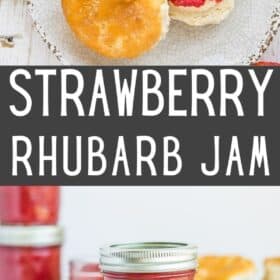
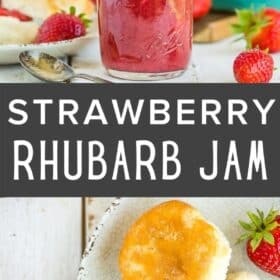
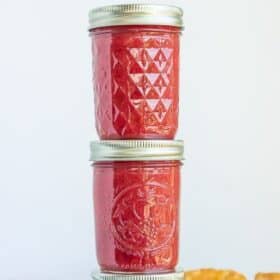
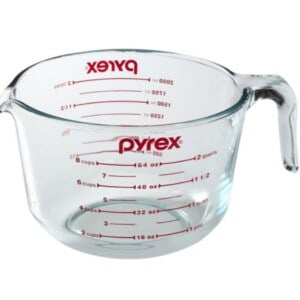
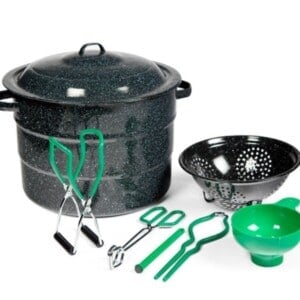
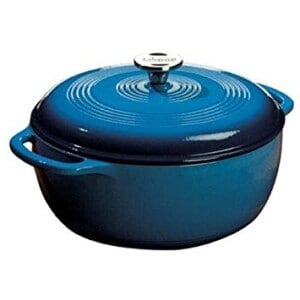
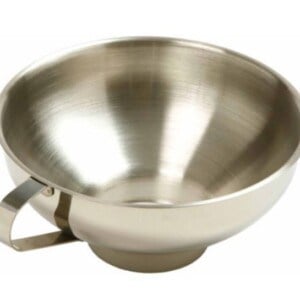


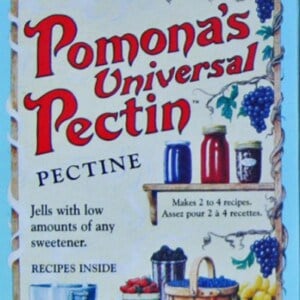

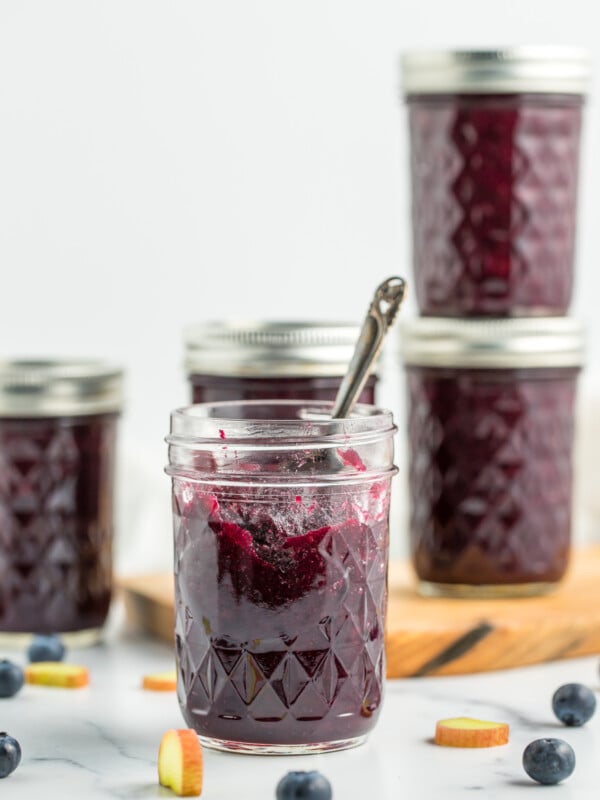
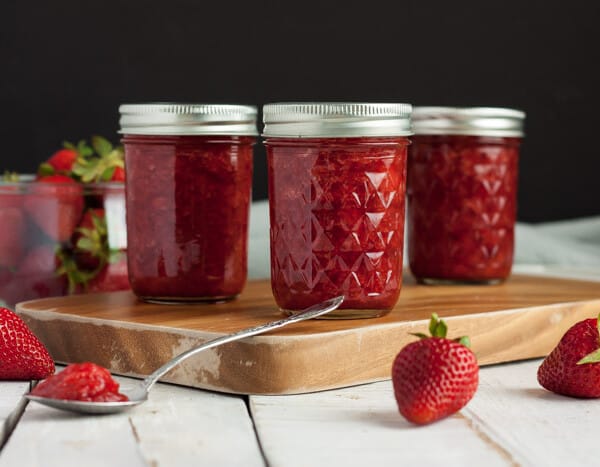
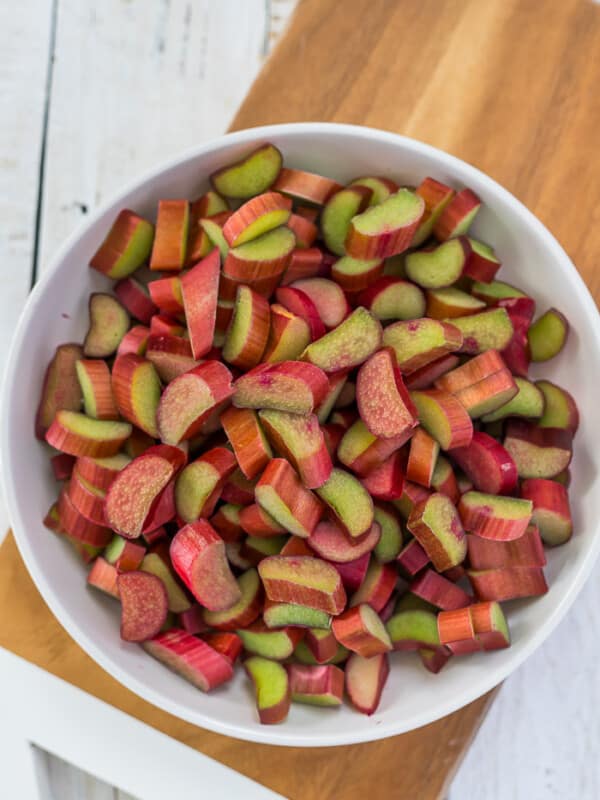
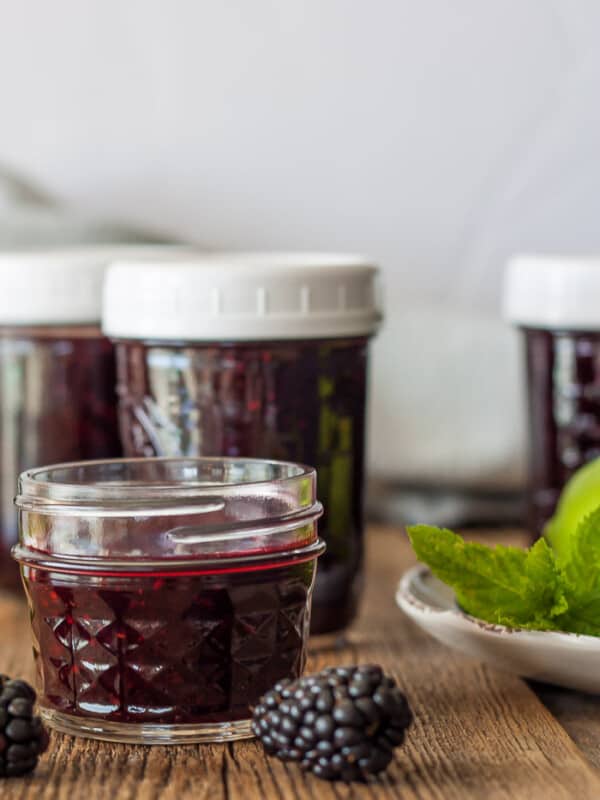
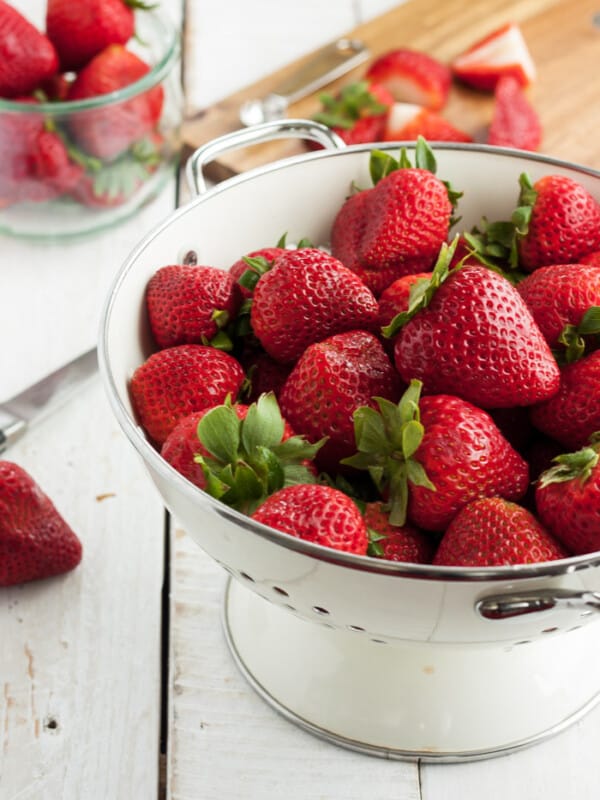
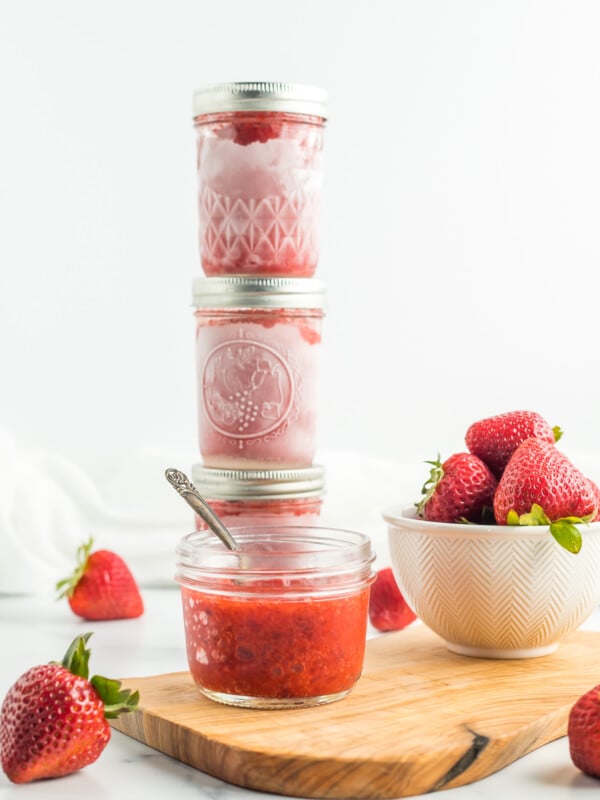






Hi Sarah, I have a few questions.
First, I’ve never made low sugar jam before.
What is the calcium water’s part in the recipe? I’m not familiar with it, is calcium water used in all low sugar recipes?
Second, Have you used a steam canner,
and could it be used to steam can jams?
I bought one a few years ago and am curious if it would. I wish there were more recipes where the steam canner is listed as ok to use vice pressure canning.
Thank you,can’t wait to try your jam recipe.I have a healthy few rhubarb bushes waiting.
Hi Susan, I found the ingredients answer on Pomona’s website and I’ll copy it below. And yes, so far, I’ve been able to use it in all low-sugar jam products:
The monocalcium phosphate powder that comes in its own packet when you purchase Pomona’s is a food-grade rock mineral source of calcium made up of two minerals, calcium and phosphorus. The food industry uses it as a yeast nutrient in baking, an acidulant in baking powder, and a mineral supplement. (source)
To answer your second question, I’ve never used a steam canner before. For years, experts have not recommended steam canning due to safety concerns. I just checked the National Center for Home Food Preservation and they do have an update on their recommendations. But basically, it says that guidelines haven’t been updated yet to provide instructions on using one. You can read about it here.
I will say that based on what I know, a steam canner will never be a substitute for a pressure canner. Pressure canning is meant for low acid foods and meats. You cannot replicate the safety of pressure canning with a steam canner. But almost all fruit recipes, like this jam that I posted, are safe for a water bath canner.
The Pomona’s pectin says to use 1/2 to 3/4 teaspoons (tsp.) of pectin per cup of mashed fruit and 1/2 to 1 tsp. of calcium water per cup of fruit. If I am reading the recipe correctly, I believe it is calling for tablespoons (tbsp.) instead of teaspoons for the pectin and calcium water. It that to make the jam firmer?
I took a second look at it and it appears to be a typo. Thank you for catching that – it should be tsp! I’ve updated it in the post.
Sounds delicious. I usually make freezer jam and both your recipe and mine for freezer specify mashing the berries instead of using a food processor. Why?
I believe to keep some of the berries intact so the “gel” happens. If you processed them too much, you’d essentially be making really watery jelly that wouldn’t set. I believe in most cases, “real” jelly requires a ton more sugar too.